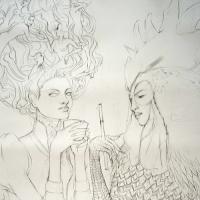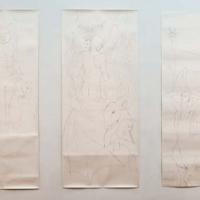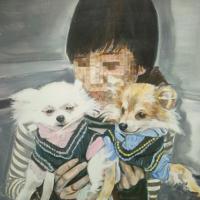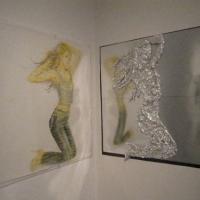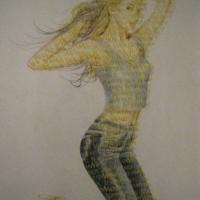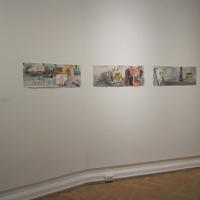(Un)Natural Visage
Patterns Mother Nature gifted to its creatures are widely duplicated and used in fashion today. A busy street of New York is filled with flamboyance in zebra stripes and jaguar spots, constructing an urban jungle in the surrounding of near-complete artificiality. Such combinations of nature and humans raises a question: Can a human really become “civilized” enough to completely segregate himself from animalistic instincts so deeply ingrained within?
Such questions have long bothered me to investigate the real faces of people, and the credibility of the visible world. Unlike animals that are lead solely by the forces of nature, humans are entitled to privileges to think and behave against the wills of their design. This enables people to hide their feelings and intentions with ambiguous, deceitful guises. Through many relationships, I have witnessed the consequences of this privilege: lies, frauds, and betrayals. If the observable does not reveal the core, how could the hidden be seen? How can the animal inside man, suppressed by etiquette, show itself?
My question about the bestial nature of people was amplified through observations of my pet dogs. Living with them allowed me to see the humans inside them, as well as a dog inside me. In many ways the society of dogs resembles that of people. There exist rules, drama, relationships, and even love. One may argue that this is because of their domestication. However, even these tamed, gentle creatures revealed their wild, selfish sides sometimes. Two dogs licking each other affectionately then they quickly showed their fangs and growled when given only one treat among them. Then it struck me that humans, peaceful and loving within the bubble of civilizations, portray similar behaviors in wars; mercilessly killing the enemy to ensure our own “selfish” survival. I was intrigued to wonder about the impassable boundary between inner and outer selves of people, where there coexist the shockingly naïve yet unimaginably evil nature of animals. Such a philosophical quest has led me to conclude my thesis on expressing these evaluations of humans and/as beasts.
What drives animals to behave the way they do – is it selfishness? Is it according to our design? Are our desires sprouted from our external needs, or from our unconscious? Are these feelings human-exclusive? My two-part thesis will present version-Hyo Jin answers to these questions we have all once asked ourselves. Although monotone lines on white may seem simple, they provide essential basic shapes for objects and images of life. The boundaries between humans and animals were blurred to enable viewers to incorporate their own interpretations, rather than strictly enforcing my own. Two-dimensional figures, the very primitive form of art, were used to suggest the primitive nature that dwells in humans. The lack of color leaves more freedom of imagination to the viewer. Simple line images, although basic, introduce many artistic methods and techniques, and are used to portray the seemingly simple but enigmatic, complicated minds of humankind. Overall, the boundlessly coalescing images of human and brute, constructed by various lines and smooth yet powerful strokes were my tools of choice to convey my messages.



